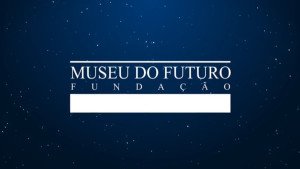Our History
Born in Curitiba, Brazil, “Teresinha de Jesus Nacli,” Teresa is a human rights activist and the daughter of a Syrian refugee, the former State Deputy for Paraná, Fuad Nacli.
Teresa has been against social inequality since her youth when she participated in the movement against the Vietnam War in Berkeley (1971). Jane Fonda was her great inspiration and driving force.
The knowledge and experience as a “UNV” from 1993 to 2005 and founder of the “Portuguese Language Club” at the UN Headquarters in New York gave her the confidence and expertise to be the founder and current president of the “Museum of the Future Foundation” in 2000. It is a non-profit organization created to promote human rights and actions for sustainable human development projects, poverty and social injustice, and to combat all forms of discrimination and prejudice.
As Designer and Owner of “Gugar Clothing Comércio Ltda” in Curitiba, Paraná, Brazil, she led a production team of 150 employees from 1980 to 1993. It was the first Brazilian company to employ female prisoners and train about 600 seamstresses, transforming its sector into technical and vocational training, in partnership with Consesp – Social Entities Council of Paraná.
Since then, the Institute and the Museum of the Future Foundation have supported and developed programs and projects with goals for sustainable human development in all its aspects.
Professional experience:
2000 – 2016
Human rights activist summarizing the work of the Museum of the Future Foundation in the USA and the Museum of the Future Foundation in Brazil – a non-profit organization of which she is the founder and sponsor. She promoted and organized various sustainable human development and women’s empowerment projects, including the Women Candidates Cooperative – Municipal Elections/2000 in Curitiba-PR. An inter-party activity with candidates from all political parties.
Teresa Nacli initiated the project for a Cultural and World Peace Center in the Golan Heights, which is the natural heir to a land area at the source of the Jordan River Mount Hermon/Golan. Syrian lands under Israeli occupation.
1994 – 1999
Worked as a volunteer at the UN – United Nations* NY-USA. Founder of the “Portuguese Language Club at the UN – United Nations – NY – 1995.
Founder of the Brazilian Institute Museum of the Future, a non-governmental organization created to promote human rights actions and sustainable human development projects – 1999.
Through IBMF – Brazilian Institute Museum of the Future, she organized the “First International Congress on Electoral and Party Law,” with the participation of 22 countries, in Curitiba – PR, Brazil.
1999
Launch of the voting machines with the presence of Minister Nery da Silveira.
1982 – 1993
Owner of the clothing trade company Gugar Confecções Comércio de Roupas Ltda. Curitiba, Paraná, Brazil. She managed a production team of 150 employees. It was the first Brazilian industry to employ and train female prisoners from a state prison. She trained about 600 seamstresses, turning the industry into a technical and professional training school in partnership with Consesp – Social Institutions Council of Paraná.
Responsible for the creation and development of the product line, as well as its marketing in the domestic and international markets. She was the first Brazilian designer to have her clothing lines displayed in the Saks Fifth Ave showcase in NY-USA.
In 1992, she promoted the coming of the carnival artist Joãozinho Trinta to collaborate with the Street Boys Recovery Movement, a project by therapist Chris Griscon, involving residents of the Vila Pinto neighborhood in Curitiba, with the organization of the Brazilian Institute Museum of the Future.
1986 – 1987
President of COIND – Textile Industry Commission – Paraná Department of Commerce and Industry. Fashion consultant for Benetton-Brazil.
1977 – 1982
English teacher at the Brazil-United States Cultural Center – Curitiba – Paraná.
Publications
Golan Heights – Historical Archive – 2015
Historical and anthropological treaty dating back to 922 AD. The published compendium documents the history of civilizations that lived in the region and the origin of the author’s family.








